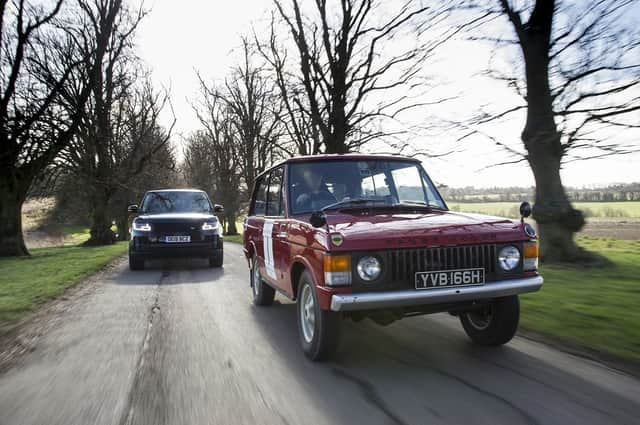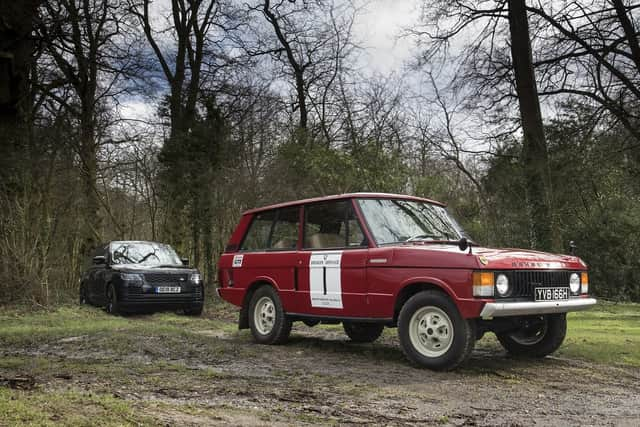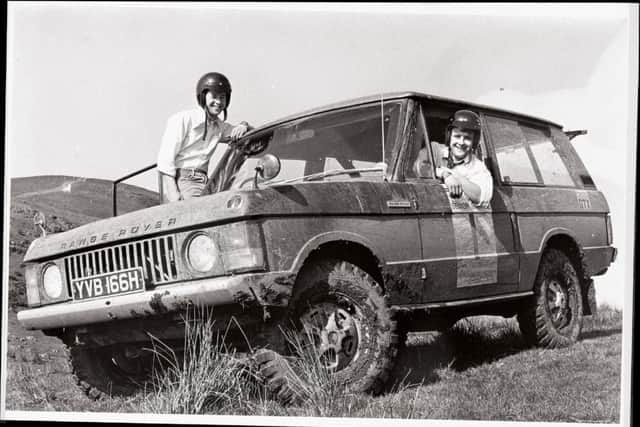Meet the ancestors - The Range Rover at 50


“It is a car for the man who has no time to attend to carpets, walnut facings and luxurious hide upholstery.”
No, not the Suzuki Jimny. Not even the Dacia Duster. Believe it or not, those words – from Autocar magazine in the early 1970s – describe a Range Rover. And it was true: when they first appeared 50 years ago, Range Rovers had an austere cabin of plastic, vinyl and painted steel. An upgrade from PVC to brushed nylon seats was as indulgent as it got for the first decade.
Advertisement
Hide AdAdvertisement
Hide AdSo, while those early cars were barely ritzier than the back of a riot van, do they have anything at all in common with 2020’s decadent Range Rovers? We’ve gathered one of the 28 pre-production vehicles from 1970 and a current SDV8 Vogue to find out.
The older car marks the final stage in the birth of Range Rover. The idea was to build a sort of more civilised Land Rover to grab a slice of the emerging market for American-style ‘leisure vehicles’. A string of seven prototypes evolved from a chunky, van-like brute with mostly Land Rover hardware to the svelte form we now recognise as the first-generation Range Rover, packed with modern kit including disc brakes, a new four-wheel-drive system, a self-levelling rear end and coil suspension in place of traditional leaf springs.


It was those coil springs – derived from Rover’s saloon-car range – that blessed the Range Rover with its party trick of enormous wheel travel, helping it soak up lumps and bumps like no off-roader before.
But how best to publicly demonstrate that skill? As it happened, the UK’s first-ever "hillrally" – a timed cross-country dash up hill and down dale – was slated for May 1971 in Mid Wales, and Rover’s top brass wanted to win it.
Advertisement
Hide AdAdvertisement
Hide AdWith its development duties completed, this very car – YVB 166H (aka ‘166’) – was picked for the task, with one of the Range Rover’s original engineers, Roger Crathorne, doing the driving. Against US Army Jeeps, Toyota Land Cruisers, Austin Champs and plenty of Land Rovers, it was a revelation, the brawny, 156bhp 3.5-litre V8 sending it languidly bounding over terrain that had the others bucking like mad.
As Crathorne describes it: “There were thousands watching and they were all standing on the track, trying to force you into a bog. I told [navigator] ‘Taff’ Evans to keep on the horn, because we’re going through them. We were going 60-70mph off-road, which is a bit stupid, really. At one stage I actually overtook the pace car.”


After two days of competition, they duly delivered the trophy back to HQ.